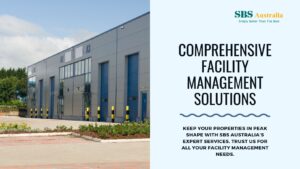Mold is a kind of microorganism that is usually called a fungus. It’s an integral part of our ecosystem. They are present in every place and can be grown indoors and outdoors as well. They can grow on rotten foods, old carpets, and furniture, including walls and wood surfaces.
In the urban population, mold thrives in poorly ventilated homes and places. Those cities with a high humidity ratio are common places for mold growth. These fungi cause havoc on both the landlords and tenants. The question lies what if there is mold growth in a rented home? Who will be responsible for taking care of it and removed from the affected area? Although it’s not a one-party job but rather a task for collective efforts from both sides. We will be accessing the responsibilities of tenants and landlords to make a clear understanding better.
Causes of Growing Mold in the Property:
There are numerous ways in which the mold can enter your home. Before we assess the landlord’s and tenant’s responsibility in case of mold growth, we should know what are the factors that may cause this problem in the first place.
1. Water Leakage through a roof
It is one of the most common reasons and leads to the growth of mold inside the home. The leakage in roofs increases the proportion of moisture coming into the house, especially in the winter season when the indoor temperature is high as compared to the outside. An excessive amount of water droplets from the roof cracks can stick with the walls and ceilings and causes fungal growth.
2. Condensation
It is also one of the causes that led to the growth of mold inside the house. In this case, the moist air is absorbed by a cool surface, hence creating a favorable condition for the fungus; it usually occurs behind the furniture walls or near the household’s machine exhaust. The poor ventilation system is the root cause of this issue.
3. Frequent Flooding Area
A natural disaster like flooding in your surrounding is a nightmare, and even after the water recedes from the property, it brings more problems along with it, one of them is mold. The floodwaters corrode our buildings and home walls. It leaves a mark on walls which is the first sign of mold. They can create an unhealthy environment for living and may cause nasal and sanitary health issues.
4. Bad Ventilation of the Property
People usually tend to ignore the insulation issues of their house, which is one of the first essential ways to protect your home from mold growth. It helps in maintaining the temperature and controlling the humidity level inside the house. Poor insulation practice can cost more than the actual repair, cold and damp areas will eventually get affected by molds. Check Solarking roof ventilation fans.
5. Plumbing and Drainage Problem
Our homes require plumbing maintenance from time to time, but if it gets ignored or unlooked-for a longer period, it will get affected by molds. The biggest source is the taps leaks and seepage under sinks from our kitchen to washrooms. These water leaks are the root cause of mold growth.
Clogged drainage places around the house are also one of the factors of growth. If there is a slow drain in your shower area or even in the sink, it takes quite a time for water to be drained, then it will invite the mold along with it.
Responsibility of a Tenant:
The tenants are also bound by a responsibility agreement, their main interest is to keep the temperature of the house at adequate levels by appropriately using all the resources in the house, keeping windows open for ventilation, use kitchen ventilation so the condensed steam from cooking could be eliminated.
Follow hygiene practices by cleaning the places of a house often. After washing the clothes, hang them outside to be dried. Do not leave any area with stagnant water and clogged drains.
If there is any problem such as the repairing or absence of ventilation which is out of their reach and lies in the owner’s responsibility, they should immediately inform them in writing.
Responsibility of a Landlord:
Landlords must need to take action if there is mold growth on their property, it is also dangerous for the tenant’s health and also reduces the home life span. There are some major concern that lies in ownership; according to the Residential Tenancies Authority (RTA), the homeowner is responsible for the mold damage if they are failed to provide the necessary resources to tenants, including proper ventilation system and repairing structural issues. Some common issues that are part of the landlord domain:
- Damaged extractor fans that are placed in the kitchen and washroom.
- Bad Insulation or broken heating machine
- Blocked pipelines in the home for the extraction of water
- Issues with taps and damaged sinks
These are all the highlighting factors that can cause mold growth. Owners are strictly advised to properly fit all the prevailing issues which come under their responsibility. In case of any mishap or loss, the tenant can file litigation against the landlord.
Conclusion:
The responsibility of both individuals is important to maintain the home decorum. Landlords and tenants should have clear communication with each other. Tenants should keep an eye on all of the activities in the home, make sure to keep the home clean, and use temperature control exhaust fans to balance the moisture and humidity inside. Landlords must also enquire about the property situation each month from the tenant.
If there’s any sign of mold growth around the rented home, then immediately start the cleaning process, do not leave any small residue of the fungus, it will grow back again. Completely remove it from the affected area, look for its root cause, and get it fixed as soon as possible. Both the parties should work collectively to resolve the mold growth and take the preventive step from time to time. It will significantly increase the lifespan of the building and its worth in monetary value too.
To maintain your property please visit SBS Australia Property Maintenance Services.
#mould #rentalhome #tenent #landlord #sbsaustralia #property #maintenance #sydney #melbourne #darwin







